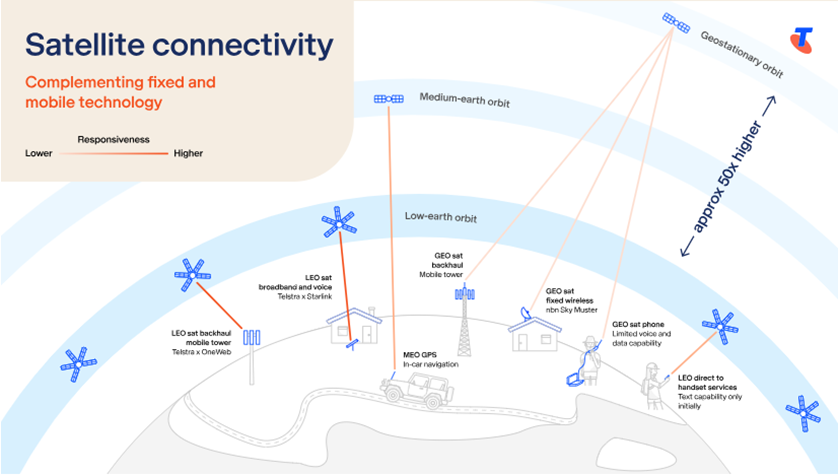Telstra, one of Australia's leading telecom providers, has recently introduced the groundbreaking Telstra Enterprise Starlink Internet service, leveraging low earth orbit (LEO) satellites.
The Plan
In a significant announcement made in July 2023, Telstra unveiled its collaboration with Starlink to bring LEO satellite connectivity into play. This initiative aims to offer voice and fixed broadband services specifically in remote and difficult-to-access regions.
One groundbreaking facet of this venture is Telstra's intention to bundle home phone service with Starlink broadband for Aussies, along with the provision for local onshore support a pioneering move in the consumer service realm.
In the near future, Telstra plans to explore a trial involving direct to handset (DTH) satellite service. Initially focused on basic connectivity such as text messages, this endeavour aims to enable communication when individuals are outside the range of terrestrial mobile network coverage.
But before we get into the technicalities, let's decode a few acronyms:
- GEO: Geostationary Equatorial Orbit satellites
- MEO: Medium Earth Orbit Satellites
- LEO: Low Earth Orbit Satellites
- DTH: Direct to Handset via LEO Satellite

Low Earth Orbit (LEO) Satellites:
LEO satellites hover at altitudes ranging from 160 to 2,000 kilometres above Earth's surface. Positioned relatively close compared to other satellite types, LEO satellites cover a limited surface area at a given time, requiring a constellation of numerous satellites for global coverage.
This proximity results in lower latency, enabling faster response times—a boon for services like voice and video calls. The increased number of satellites allows for higher global capacity and scale-able connections, promising impressive download speeds.
To connect to a LEO satellite, a small dish or panel on the ground or roof is needed. These antennas, akin to pay-TV dishes, are relatively easy to install.
Beyond home internet, LEO satellites are also enhancing network responsiveness by providing back-haul to remote mobile base stations.
Direct to Handset (DTH) Connectivity via LEO Satellites:
The proximity and improved responsiveness of LEO satellites pave the way for DTH technology.
This innovation holds promise for basic mobile services like text messages, eventually extending to voice and low-rate data, even in remote locations. Interestingly, modern smartphones, especially newer Apple models, possess the inherent technology to leverage DTH connectivity.
While DTH appears promising, its current limitations mean it complements rather than replaces terrestrial mobile networks. Initially supporting text and later voice and low-speed data, DTH requires next-gen handsets supporting the 3GPP NTN standard.
Medium Earth Orbit (MEO) Satellites:
Often overlooked but widely used, MEO satellites, orbiting at around 10,000km above Earth, primarily serve navigational purposes, such as GPS. While they require fewer satellites for global coverage compared to LEO, they entail higher latency and greater costs for deployment and construction, limiting their applications to specific niches.
Geostationary Equatorial Orbit (GEO) Satellites:
These are the traditional satellites known for providing satellite-based communication services. Positioned around 35,000km above Earth's surface, GEO satellites cover the entire planet with just a few satellites. However, their significant distance leads to substantial latency, affecting real-time applications like video calls and gaming.
Exciting Times Ahead:
With the launch of Telstra's Satellite Internet powered by Starlink in March 2024, the next five years promise groundbreaking advancements in satellite technology. As these innovations unfold, consumers can anticipate an array of new possibilities and improved connectivity experiences.
Wrapping Up
Telstra's collaboration with Starlink is a leap forward in satellite technology, offering enhanced connectivity and services, particularly in remote regions. As the technology evolves, the potential for improved global communication becomes increasingly tangible, opening new doors for connectivity beyond conventional boundaries.

Subscribe to our email newsletter and unlock access to members-only content and exclusive updates.

Comments